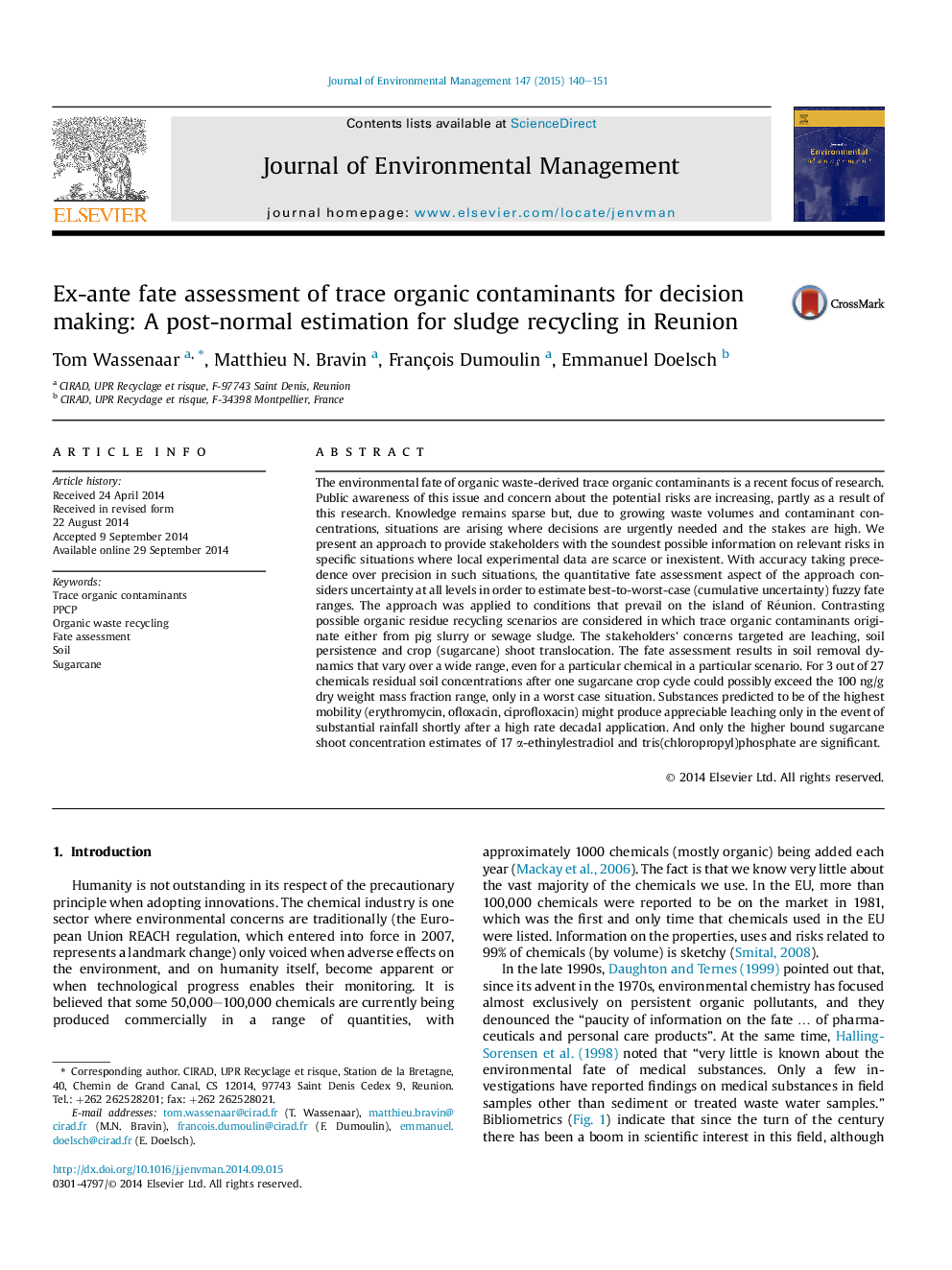| کد مقاله | کد نشریه | سال انتشار | مقاله انگلیسی | نسخه تمام متن |
|---|---|---|---|---|
| 1055655 | 1485265 | 2015 | 12 صفحه PDF | دانلود رایگان |
• A 5-step approach to inform decision making on TOC risk despite large uncertainty.
• 3 Assessment targets collectively selected: seepage, soil and shoot concentration.
• Fate assessment results of 4 recycling scenarios in Reunion differ markedly.
• Results provide little reason for concern, which changes with shorter crop cycles.
• Very few out of 27 considered chemicals warrant further empirical research.
The environmental fate of organic waste-derived trace organic contaminants is a recent focus of research. Public awareness of this issue and concern about the potential risks are increasing, partly as a result of this research. Knowledge remains sparse but, due to growing waste volumes and contaminant concentrations, situations are arising where decisions are urgently needed and the stakes are high. We present an approach to provide stakeholders with the soundest possible information on relevant risks in specific situations where local experimental data are scarce or inexistent. With accuracy taking precedence over precision in such situations, the quantitative fate assessment aspect of the approach considers uncertainty at all levels in order to estimate best-to-worst-case (cumulative uncertainty) fuzzy fate ranges. The approach was applied to conditions that prevail on the island of Réunion. Contrasting possible organic residue recycling scenarios are considered in which trace organic contaminants originate either from pig slurry or sewage sludge. The stakeholders' concerns targeted are leaching, soil persistence and crop (sugarcane) shoot translocation. The fate assessment results in soil removal dynamics that vary over a wide range, even for a particular chemical in a particular scenario. For 3 out of 27 chemicals residual soil concentrations after one sugarcane crop cycle could possibly exceed the 100 ng/g dry weight mass fraction range, only in a worst case situation. Substances predicted to be of the highest mobility (erythromycin, ofloxacin, ciprofloxacin) might produce appreciable leaching only in the event of substantial rainfall shortly after a high rate decadal application. And only the higher bound sugarcane shoot concentration estimates of 17 α-ethinylestradiol and tris(chloropropyl)phosphate are significant.
Journal: Journal of Environmental Management - Volume 147, 1 January 2015, Pages 140–151
